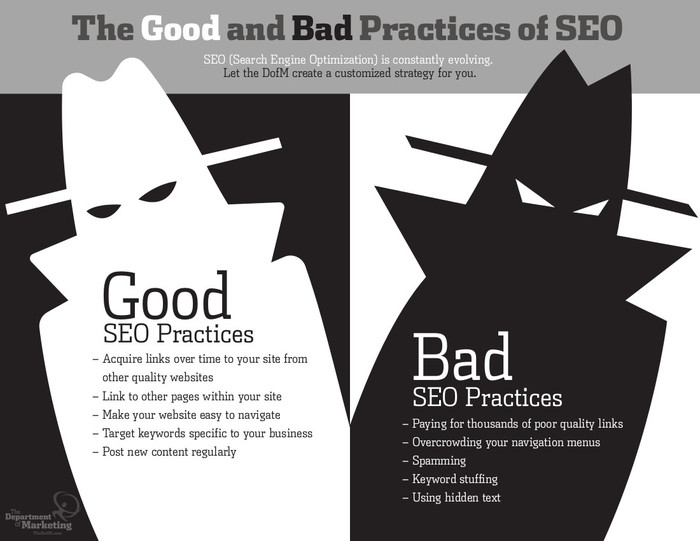Link-building is a critical component of a successful SEO strategy. A consistent, quality-focused link-building campaign can drive traffic, increase brand visibility, and improve search rankings. However, like all aspects of digital marketing, link-building is not a one-size-fits-all proposition. Its success hinges on meticulous measurement, monitoring, and analysis of key metrics. This article provides a comprehensive overview of the crucial link-building metrics that businesses should keep an eye on to ensure the success of their SEO campaigns.
The Link-Building Metrics Businesses Should Know: Defining Link-Building Metrics: What Are They?
Link-building metrics are various parameters that help evaluate the effectiveness of your link-building strategies. They help track progress, identify opportunities, diagnose problems, and offer valuable insights to inform strategic adjustments. Essentially, these metrics reflect how well your site attracts high-quality backlinks, which are a major ranking factor in search engines’ algorithms.
One primary link-building metric is the number of backlinks. This reflects the number of external links directed toward your website from other sites. However, it’s important to note that not all backlinks are created equal. The quality of these backlinks can significantly impact your website’s SEO performance, leading to the following critical metric – the quality of backlinks.
Quality is often judged by parameters such as the linking site’s authority and relevance, the linking page’s content to your site, and the anchor text used in the link. Websites with high power and relevance typically contribute more positively to your site’s SEO performance. Hence, attracting such backlinks should be a priority in your link-building strategy.
According to Seek SEO, one of the link-building agencies available to businesses nationwide:
In 2022, Google implemented a major update to combat link spam, which caused many websites to lose their rankings overnight. But our link building service knows what it takes to build high-quality backlinks that still work post-update.
Another significant link-building strategy is the diversity of backlink sources. If multiple backlinks come from the same website, they may not contribute as much to your SEO as backlinks from various unique websites. Diverse sources of backlinks reflect a wider sphere of influence and can significantly boost your site’s credibility in the eyes of search engines.
Additionally, the velocity of link acquisition – how quickly your site gains new backlinks – can influence your site’s SEO performance. A sudden influx of links can appear suspicious to search engines and might lead to penalties. On the other hand, a steady and gradual increase in backlinks signifies organic growth and can be beneficial.
Understanding the link’s location on the page is another metric to consider. Backlinks placed in the body of the content are typically more valuable than those in footers or sidebars.
The Most Important Link-Building Metrics to Keep an Eye On
Although there are numerous link-building metrics, certain ones hold greater importance due to their significant influence on your SEO performance. These include Domain Authority (DA), Domain Rating (DR), Trust Flow (TF), Monthly Traffic, and Spam Score. They provide a comprehensive view of a website’s authority, backlink quality, and organic traffic, among other factors.
Domain Authority (DA) and Domain Rating (DR): The Key Metrics for Assessing Website Authority
Domain Authority (DA), a metric developed by Moz, and Domain Rating (DR), a similar metric developed by Ahrefs, are crucial indicators of a website’s overall authority. They are scored on a scale of 0-100, with higher scores indicating greater source. These scores are calculated based on various factors, including the number and quality of inbound and outbound links.
The DA and DR of a website from which you earn a backlink can significantly impact your site’s SEO performance. Higher DA and DR scores typically translate to more valuable backlinks, boosting your site’s search engine rankings. However, it’s worth noting that DA and DR should not be the sole determinants of the quality of a backlink. The relevance and quality of content on the linking page also play a vital role.
While DA and DR are important metrics, they’re not direct ranking factors used by Google. Instead, they are predictive measures, estimating how well a website could potentially rank in search engine results. As such, they should be used with other link-building metrics for a more holistic view of your site’s SEO performance.
Trust Flow (TF): Assessing the Trustworthiness of Backlinks
Trust Flow, a metric developed by Majestic, gauges the quality of backlinks pointing to a website. It measures the trustworthiness of a site based on the quality of the sites linking back to it. The premise is that trustworthy sites tend to link to other reliable sites.
A high Trust Flow score signifies that a website has high-quality backlinks, which can benefit your site if you earn a backlink from such a site. On the other hand, a low Trust Flow score may indicate many low-quality backlinks, which can harm your SEO performance.
It’s also crucial to compare Trust Flow with Citation Flow, another metric by Majestic. While Trust Flow measures the quality of backlinks, Citation Flow measures the quantity. A significantly higher Citation Flow than Trust Flow could indicate many low-quality backlinks, warranting a thorough backlink audit.
Monthly Traffic: Assessing a Page’s Keyword and Organic Traffic
The monthly traffic to a website, specifically to the page linking back to your site, is another essential metric to consider. High traffic indicates that the page has visibility and could potentially drive more visitors to your website.
Organic traffic, in particular, is a critical factor. It represents visitors who find the page through a search engine. A high level of organic traffic suggests the page has a good SEO standing, which could positively impact your site when it links back to you.
Moreover, knowing the primary keywords driving traffic to the page can provide insights into keyword opportunities for your site. The backlink could be especially valuable for your SEO strategy if the page ranks for relevant high-volume keywords.
Spam Score: Assessing a Page’s Niche and Content for Quality
Moz’s Spam Score metric is a valuable tool to assess the quality and relevance of a page’s content. It measures the probability of a site being penalized or banned by Google based on various on-site factors that mimic patterns of spam or manipulation.
A high Spam Score signifies that the site employs dubious tactics that are likely to be penalized by Google. Acquiring a backlink from such a site can negatively impact your site’s SEO performance. On the other hand, a low Spam Score suggests a healthier site that abides by Google’s guidelines.
Moreover, understanding the site’s niche and evaluating its content quality can further help assess the value of the backlink. A backlink from a high-quality, relevant piece of content can add more value to your site than one from unrelated or poor-quality content.
Natural Link-Building: Building Organic Backlinks
Building organic backlinks – earned without directly requesting them – is a significant aspect of link-building. Organic backlinks are usually a result of high-quality content, and they can provide immense SEO benefits. Search engines view these backlinks as votes of confidence, indicating that your site offers valuable content worthy of citation.
Creating high-quality, unique, and relevant content should be the cornerstone of your strategy to earn organic backlinks. This can be in the form of well-researched blog posts, comprehensive guides, infographics, case studies, or any content that provides value to your audience. The higher the value you provide, the higher the likelihood of other websites linking to your content.
In addition to quality content, regular promotion and outreach can boost your chances of earning organic backlinks. Sharing your content on social media platforms, relevant forums, and email newsletters can increase its visibility, thereby increasing the likelihood of it being linked back to.
Furthermore, consider leveraging relationships with influencers, bloggers, and other industry professionals. Providing guest posts or participating in expert round-ups can earn you valuable backlinks and expand your network and brand visibility.
Another effective strategy for natural link-building is broken link-building. This involves finding broken links on other websites and suggesting your relevant content as a replacement. This can be a win-win situation as it helps the website owner fix a broken link while earning you a backlink.
Always remember that natural link-building is a long-term strategy. It requires consistent effort and patience. However, high-quality, organic backlinks can significantly boost your SEO performance.
Competitor Analysis: Learning from Successful Link Profiles
Competitor analysis is a vital part of a successful link-building strategy. By examining the link profiles of your top-performing competitors, you can gain insights into their link-building strategy and identify potential opportunities for your campaign.
Start by identifying who your main competitors are. These could be businesses offering similar products, services, or websites that rank highly for keywords relevant to your business. Various SEO tools can help you discover your main competitors based on keyword overlap and rankings.
Analyze your competitors’ backlink profiles. Look at the number of backlinks, the quality, the sources, and how they’ve changed over time. This can give you an idea of a successful link profile in your industry and how fast you should acquire new links.
The next step is to identify the pages on your competitor’s sites attracting the most backlinks. What type of content is it? How is it structured? Understanding this can provide you with content ideas that will likely earn backlinks.
You should also pay attention to the anchor text used in the backlinks. Anchor text can play a role in rankings, and understanding the most common anchor texts in your competitor’s backlinks can inform your keyword strategy.
Competitor analysis isn’t just about copying what works. Identifying gaps and opportunities your competitors are missing is equally important. This could be specific topics they haven’t covered, sites they haven’t earned backlinks from, or any area where you could potentially outperform them.
Link-building is a complex and nuanced aspect of SEO. Understanding and monitoring the right metrics – like Domain Authority, Trust Flow, monthly traffic, and Spam Score – can provide valuable insights into the effectiveness of your link-building strategies. It’s also essential to focus on earning organic backlinks through quality content and learn from your competitors’ successful link profiles.
Remember, link-building is a marathon, not a sprint, and a successful campaign requires patience, persistence, and continual optimization. Stay focused on building a robust and diversified link profile, and your SEO performance improves over time.






















